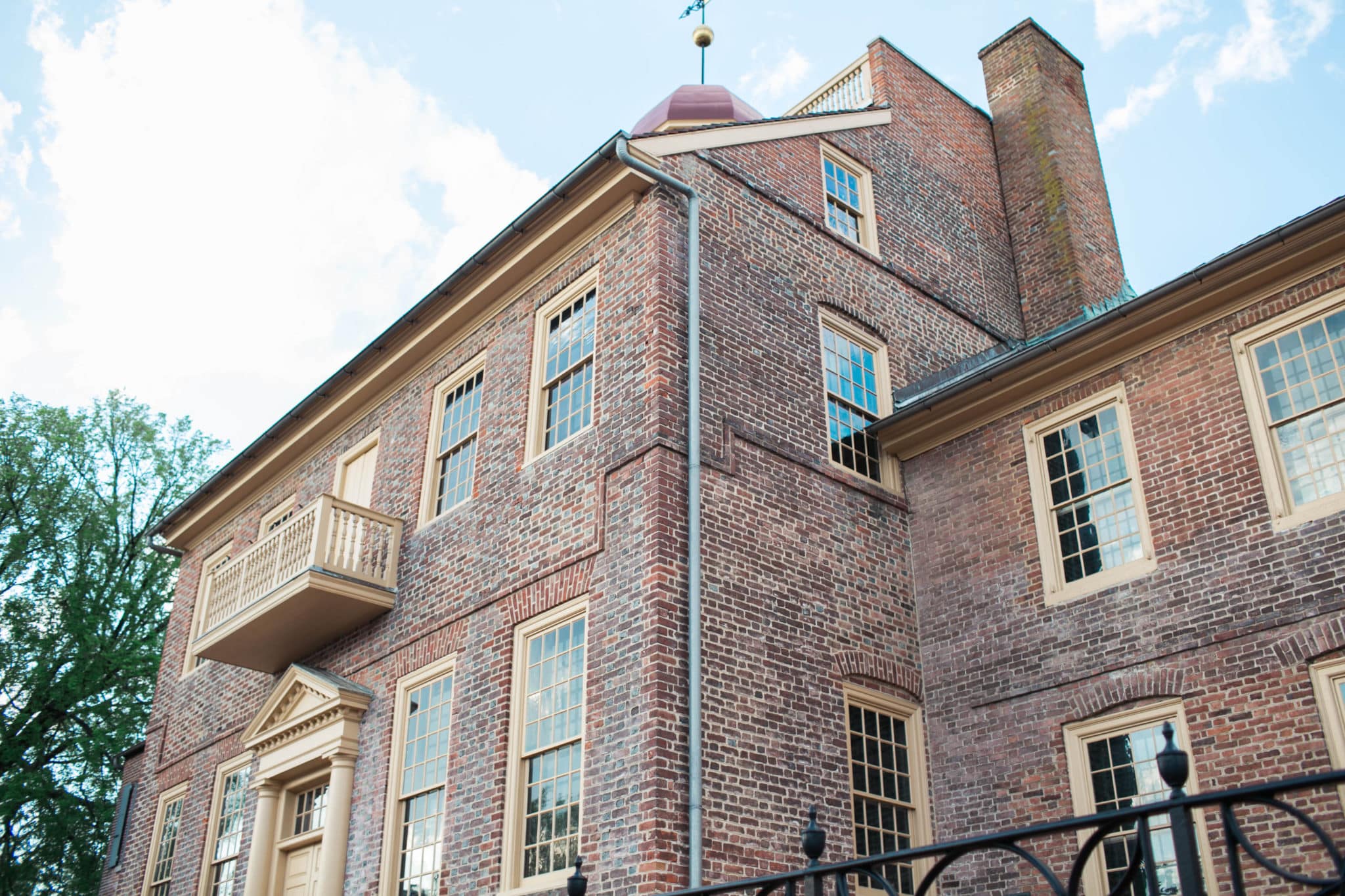
Article Summary: Delaware Landmarks
Delaware Landmarks. More Than Just Parks has 20 incredible must-see sites for you to visit.
There’s so much more to this exciting place than the Delaware Water Gap. In this article, we’ll familiarize you with the incredible landmarks located in The First State.
We’ve got incredible places, iconic memorials, fascinating museums, epic monuments and so much more.
We’re going to give you our list of the Top 20 Landmarks In Delaware.
So, What Is A Landmark?
Well, it’s a place of “a special character or special historical or aesthetic interest or value as part of the development, heritage, or cultural characteristics of a city, state, or nation.”
Why visit these places? Because landmarks connect us to the past. Through visiting these wonderful places where history occurred we find our roots. It allows us to feel like we are a part of something much bigger than ourselves.
And, speaking of history, did I mention that I taught the subject? I spent a lifetime teaching about the history behind many of these amazing sites. Then I got to see them firsthand. And now I’m sharing the fascinating stories of these places with you. It doesn’t get any better than that!
So, without further ado, let’s dive in.
Table of Contents: Delaware Landmarks
Delaware Landmarks
Some Fascinating Facts About Delaware
- First State: Delaware is known as the “First State” because it was the first state to ratify the United States Constitution on December 7, 1787. This historic event took place at the Old State House in Dover, Delaware.
- Small but Mighty: Delaware is the second smallest state in the United States, covering an area of just 1,949 square miles (5,046 square kilometers). Despite its small size, it has a rich history and significant economic influence.
- Tax Haven: Delaware is renowned for its business-friendly environment and is often considered a tax haven. Many major corporations choose to incorporate in Delaware due to its favorable corporate laws, including tax benefits and a specialized court system.
- No Sales Tax: Delaware is one of the few states in the U.S. that does not impose a sales tax. This has made it a popular shopping destination, particularly for neighboring states’ residents who often travel to Delaware to take advantage of tax-free shopping.
- Capital City Swap: Delaware’s capital city, Dover, is the second oldest continuously inhabited capital in the United States, after Santa Fe, New Mexico. Interestingly, Delaware’s first capital was New Castle, followed by Wilmington before it was ultimately moved to Dover.
- Prime Location: Delaware’s geographic location is advantageous. It is situated on the East Coast of the United States, making it easily accessible to major cities such as Philadelphia, Baltimore, and Washington, D.C., all within a few hours’ drive.
- Coastal Charm: Delaware has a picturesque coastline along the Atlantic Ocean, with popular beach towns such as Rehoboth Beach, Dewey Beach, and Bethany Beach. These coastal areas attract tourists and provide recreational opportunities for residents.
- Delaware River and Bay: The Delaware River and Delaware Bay are significant water bodies that shape the state’s geography. The Delaware River serves as a natural border between Delaware and New Jersey and has played a vital role in trade and transportation throughout history.
- DuPont Legacy: Delaware has a strong connection to the DuPont family and their industrial empire. The DuPont Company, originally established in Wilmington, Delaware, played a significant role in the state’s economic development and was a major producer of chemicals, textiles, and other materials.
- Tax-Free Shopping: In addition to the absence of a sales tax, Delaware also does not impose a state-level personal income tax on individuals. This financial advantage attracts many residents and businesses to the state.
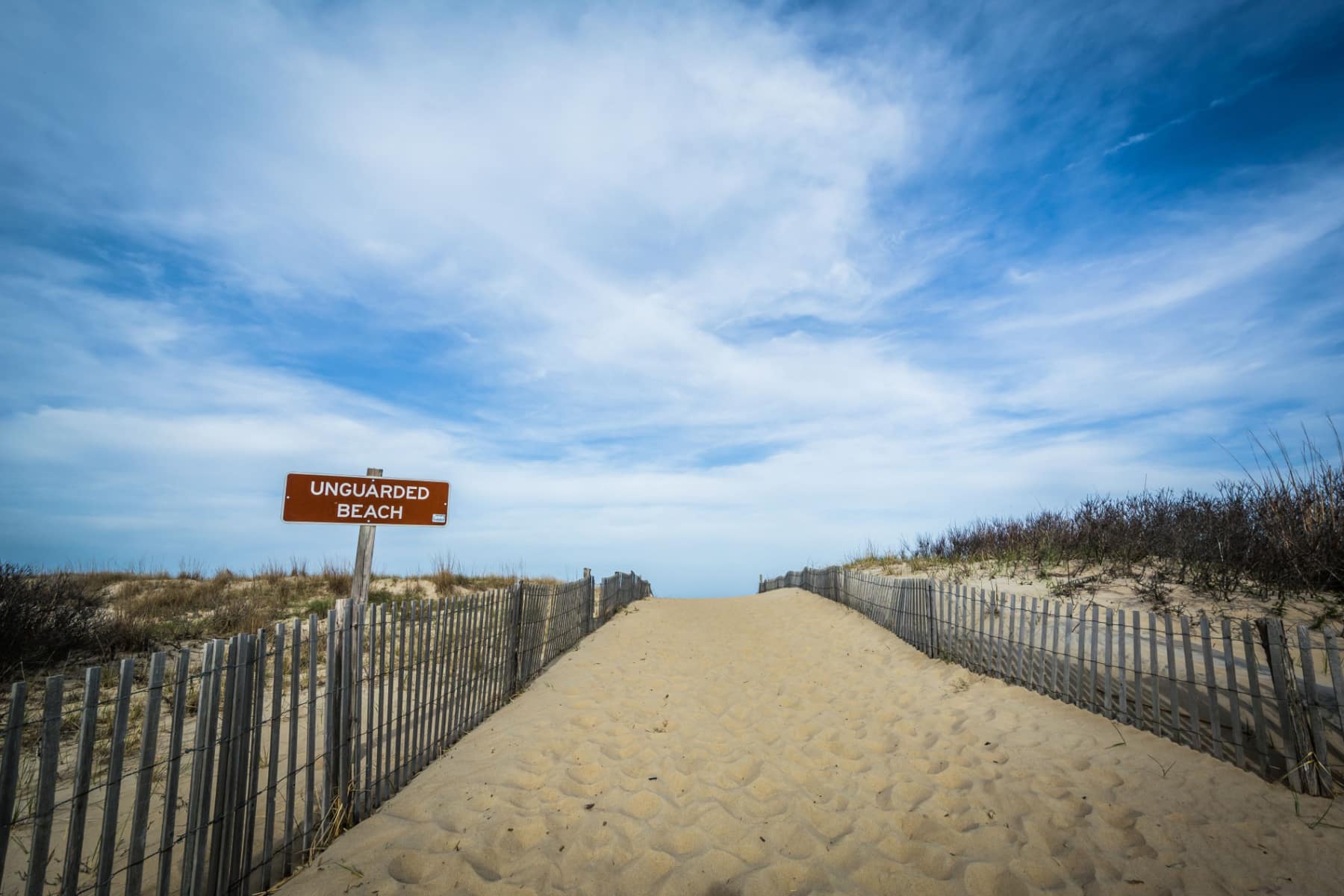
Top 20 Delaware Landmarks
20. New Castle Court House Museum
Delaware is sometimes referred to as the Chemical Capital of the World. A majority of the state’s economy relies heavily on chemical manufacturing, including pharmaceuticals, industrial chemicals and plastics. It’s also home to some truly amazing landmarks, too, and we’re excited to share them with you.
More Than Just Parks is excited to share our list of the 20 Best Delaware Landmarks. And we’re kicking off our list at #20 with the New Castle Court House Museum.
The New Castle Court House Museum is located in New Castle, Delaware, and is housed within the historic New Castle Court House, which is a National Historic Landmark. The building itself is an architectural gem and is considered one of the finest examples of colonial Georgian architecture in the United States.
The museum tells the story of Delaware’s early legal and political history, focusing on the period from 1682 to 1777 when New Castle served as the colonial capital of Delaware. It was in this court house that significant events took place, including the drafting and approval of Delaware’s first state constitution in 1776, making it the first state to adopt its own constitution.

Points Of Interest
Inside the museum, visitors can explore various exhibits and displays that showcase Delaware’s rich legal and political heritage. The exhibits feature artifacts, documents, and interactive displays that highlight the significant role played by the court house in the development of Delaware as a state.
One of the notable exhibits is the Governor’s House exhibit, which recreates the office of the colonial governor and provides a glimpse into the daily life and responsibilities of the colonial governor during that era.
The museum also features a courtroom setting, where visitors can experience a simulated trial from the 18th century. This interactive experience allows visitors to participate in a historical reenactment, providing a unique opportunity to learn about the legal processes and court proceedings of the time.
Additionally, the museum offers guided tours conducted by knowledgeable staff who provide detailed information about the history of the court house and its significance in the founding of Delaware.
Outside the museum, visitors can explore the surrounding historic district of New Castle, which features well-preserved colonial-era buildings, charming cobblestone streets, and beautiful gardens. The museum is conveniently located within walking distance of other historic attractions in New Castle, including the Dutch House, Immanuel Episcopal Church, and the Read House and Gardens.
19. Fenwick Island Lighthouse
Our next site has long been an important landmark along the Delaware coast. At #19 on our list of the Best Delaware Landmarks is Fenwick Island Lighthouse.
The Fenwick Island Lighthouse is located on Fenwick Island, a barrier island on the Atlantic coast of Delaware and Maryland. It is situated near the southern border of Delaware, marking the entrance to the Delaware Bay.
The construction of the original Fenwick Island Lighthouse began in 1856, and it was completed in 1859. This lighthouse was a conical brick structure standing at a height of 87 feet (26.5 meters) and featured a fixed white light. It served as a navigational aid to guide ships safely through the treacherous waters and shifting sandbars in the area.
During the Civil War, the Fenwick Island Lighthouse played a crucial role in coastal defense. It was temporarily extinguished in 1861 to prevent its light from aiding Confederate blockade runners. However, it was relit after the war ended.
Over the years, the lighthouse underwent several modifications and improvements. In 1880, the original fixed light was replaced with a fourth-order Fresnel lens, which emitted a more powerful and distinctive light pattern. The lighthouse keeper’s residence was also expanded and improved to accommodate the needs of the keepers and their families.
Despite these upgrades, the shifting sands surrounding Fenwick Island posed a significant challenge. The lighthouse had to be continually protected against erosion and encroaching water. In 1926, the lighthouse was relocated approximately 1,500 feet (457 meters) inland to a safer location.

Changes To The Lighthouse
In 1938, the original brick tower was replaced with the current lighthouse structure, a steel and cast iron tower standing at a height of 87 feet (26.5 meters). The new lighthouse was constructed using materials salvaged from the decommissioned Cape Henlopen Lighthouse, which had been replaced by an automated light.
In 1981, the Fenwick Island Lighthouse was decommissioned and replaced by a modern skeletal tower nearby. However, due to public demand and its historical significance, the original lighthouse was restored and reopened to the public in 1982.
Today, the Fenwick Island Lighthouse stands as a beloved symbol of maritime heritage and a popular attraction for visitors. It offers stunning views of the surrounding coastline and provides insight into the challenges faced by lighthouse keepers in the past.
The Fenwick Island Lighthouse is operated by the Delaware Seashore State Park and is open to the public for tours. It serves as a reminder of Delaware’s maritime history and the vital role that lighthouses played in ensuring the safety of seafarers along the Atlantic coast.
18. Delaware Seashore State Park
The Fenwick Island Lighthouse provides a nice transition to our next Delaware landmark. It’s the Delaware Seashore State Park coming in at #18 on our list.
Delaware Seashore State Park is a beautiful coastal park located in Sussex County, Delaware. Stretching along the Atlantic Ocean, the park covers over 2,800 acres and offers a wide range of recreational activities and natural attractions.
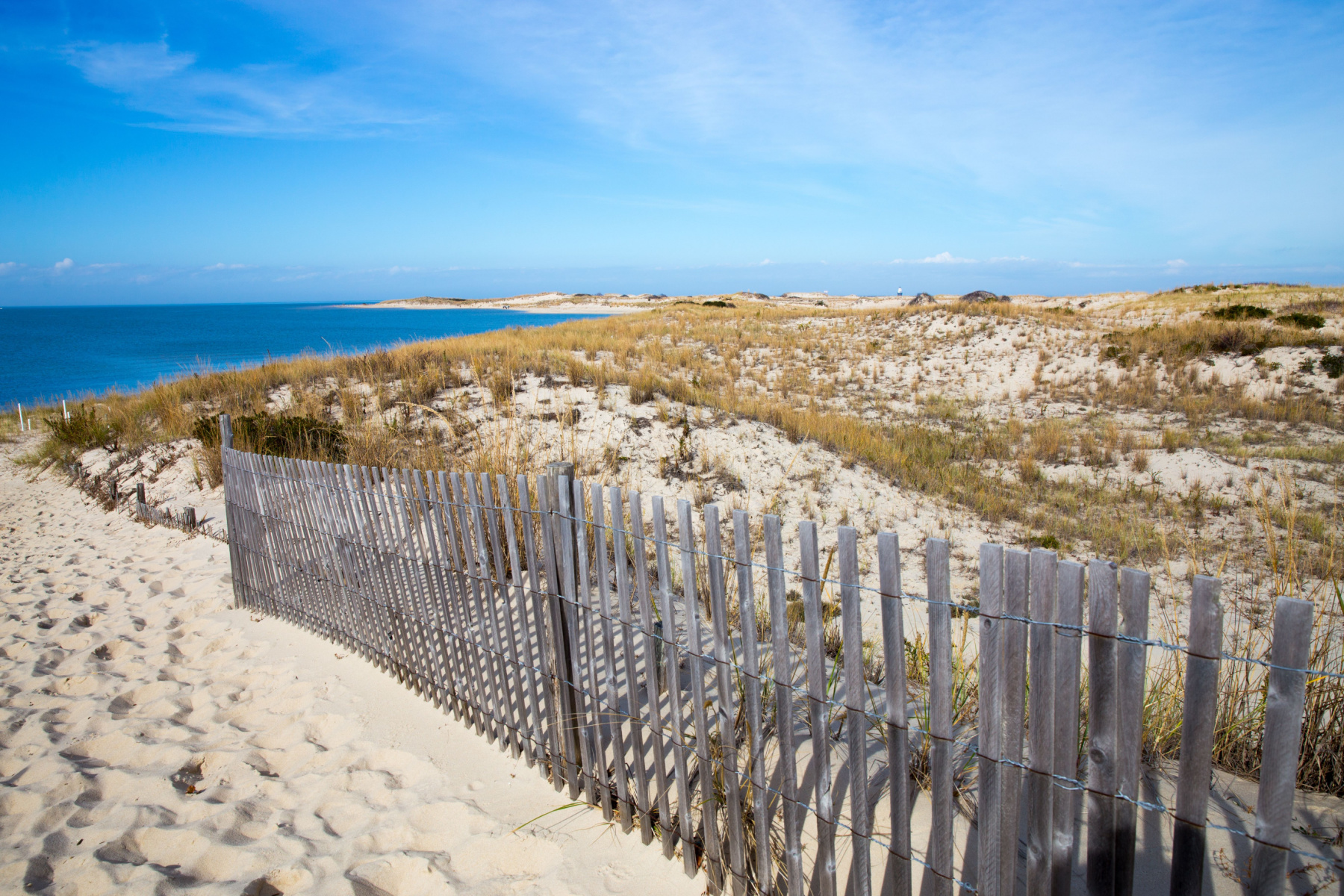
Things To Do At The Park
- Beaches: The park features stunning beaches where visitors can relax, sunbathe, swim, and enjoy the ocean. The beaches are known for their soft sand and picturesque views. Lifeguards are on duty during the summer season, ensuring a safe environment for visitors.
- Water Activities: Delaware Seashore State Park offers ample opportunities for water-based activities. Visitors can enjoy swimming, surfing, kayaking, paddleboarding, boating, and fishing. The park provides access to both the ocean and the bay, making it suitable for various water sports and recreational pursuits.
- Indian River Marina: Located within the park, Indian River Marina is a full-service marina that offers boat rentals, charters, and slip rentals. It serves as a hub for boating enthusiasts and provides access to the Indian River Bay and the Atlantic Ocean.
- Nature Trails: The park boasts several scenic nature trails that allow visitors to explore the diverse coastal ecosystems. The Burton Island Nature Preserve Trail and the Fresh Pond Trail offer opportunities for birdwatching, wildlife spotting, and peaceful walks amidst nature.
- Camping: Delaware Seashore State Park provides camping facilities, allowing visitors to spend the night immersed in the coastal ambiance. The park offers both tent and RV camping options with amenities such as picnic areas, restrooms, and shower facilities.
- Surf Fishing: Fishing enthusiasts will appreciate the excellent surf fishing opportunities available at the park. The Delaware Seashore State Park allows fishing from designated areas along the shoreline, where anglers can try their luck at catching striped bass, bluefish, flounder, and other species.
- Picnicking and Recreation Areas: Delaware Seashore State Park features numerous picnic areas equipped with tables, grills, and shelters. These areas are perfect for enjoying a meal with family and friends while taking in the scenic surroundings. The park also offers recreational facilities, including volleyball courts and playgrounds.
- Wildlife Viewing: The park is home to a diverse array of wildlife species. Visitors can observe shorebirds, migratory birds, and other coastal wildlife in their natural habitats. The park’s varied ecosystems, including marshes, dunes, and maritime forests, provide a haven for numerous bird species and other animals.
17. Air Mobility Command Museum
Our next Delaware landmark is a fascinating attraction that showcases the rich history of military aviation and the role of the Air Mobility Command. Welcome to the Air Mobility Command Museum.
The Air Mobility Command Museum is situated on the grounds of Dover Air Force Base, which is home to the 436th Airlift Wing and the 512th Airlift Wing. The museum’s mission is to preserve and showcase the heritage and accomplishments of military aviation, particularly in the field of airlift and air refueling.
The museum boasts an impressive collection of aircraft, artifacts, and exhibits that chronicle the evolution of military aviation and its impact on global mobility. Visitors can explore the museum’s extensive indoor and outdoor displays, allowing them to learn about the history, technology, and human stories behind these aircraft.
Inside the museum’s main building, visitors will find a wide range of exhibits that highlight various aspects of military aviation. These exhibits include interactive displays, historical artifacts, and informative panels that provide insights into the evolution of aircraft design, the challenges faced by aircrews, and the important role played by air mobility in military operations.

A C-9A Nightingale at the Air Mobility Command Museum | Courtesy of Wikimedia Commons
Points Of Interest
One of the main highlights of the museum is its collection of aircraft. The outdoor display area showcases a variety of planes, ranging from vintage propeller-driven aircraft to modern jet-powered cargo planes and tankers. Visitors can get up close to these impressive aircraft, take photographs, and appreciate their engineering and historical significance.
The Air Mobility Command Museum also features a restoration hangar, where volunteers and staff work diligently to restore and preserve vintage aircraft. Visitors have the opportunity to witness restoration efforts firsthand, gaining insight into the meticulous process of bringing these historic planes back to their former glory.
Additionally, the museum hosts special events throughout the year, such as open houses, aircraft dedications, and educational programs. These events offer unique opportunities for visitors to engage with the aviation community, interact with veterans and active-duty personnel, and learn more about the Air Mobility Command’s role in global operations.
Entry to the Air Mobility Command Museum is free of charge, making it an accessible and educational destination for aviation enthusiasts, history buffs, and families alike. The museum serves as a tribute to the men and women who have contributed to military aviation and showcases the vital role of air mobility in defending the nation and supporting humanitarian efforts worldwide.

A T-33 Shooting Star at the Air Mobility Command Museum | Courtesy of Wikimedia Commons
16. John Dickinson Plantation
Our next Delaware landmark is a plantation has been converted to a living museum where visitors can tour the grounds and interact with staff dressed in period costume. At #16 on our list of the Best Delaware Landmarks is the John Dickinson Plantation.
John Dickinson was born in Maryland in 1732, but his family moved to Delaware when he was young. Dickinson was an influential lawyer and politician, and he played a key role in the lead-up to the American Revolution.
In 1765, he wrote “The Late Regulations Respecting the British Colonies on the Continent,” which became known as the “Letters from a Farmer in Pennsylvania.” In these letters, Dickinson argued that the British government had no right to tax the American colonies without their consent.

Dickinson Helped To Draft The Articles Of Confederation
During the Revolutionary War, Dickinson served in the Continental Congress and helped draft the Articles of Confederation, which were the first constitution of the United States. He also served as the governor of Delaware and Pennsylvania at various times.
In 1780, Dickinson purchased a large farm near Dover, Delaware, and built a beautiful mansion that he called “Poplar Hall.” The house was constructed in the Georgian style, with a central hall and four rooms on each side. The property also included several outbuildings, including a kitchen, a smokehouse, and a dairy.
Dickinson lived at Poplar Hall for the rest of his life, and he died there in 1808. After his death, the property passed down through several generations of his family, and it eventually fell into disrepair. In the 1950s, the state of Delaware purchased the property and restored the house and outbuildings to their original condition.
Things To Do
Here are some things to do at the John Dickinson Plantation:
- Take a guided tour: The best way to learn about the history and significance of the John Dickinson Plantation is by taking a guided tour. Knowledgeable guides will take you through the house and grounds, pointing out important features and telling stories about the people who lived and worked there.
- Explore the grounds: The John Dickinson Plantation features beautiful gardens and a working farm. Take a stroll around the grounds to enjoy the natural beauty of the area and see the farm animals.
- Visit the museum: The museum at the John Dickinson Plantation features exhibits and artifacts that showcase the history of the property and the people who lived there. Learn about the role of John Dickinson in the founding of the United States and the lives of the enslaved people who lived and worked on the plantation.
- Participate in educational programs: The John Dickinson Plantation offers a variety of educational programs for visitors of all ages. From hands-on workshops to interactive tours, these programs provide a fun and engaging way to learn about the history of the plantation and its significance to American history.
- Shop at the museum store: The museum store at the John Dickinson Plantation offers a selection of books, souvenirs, and gifts related to the history of the property and the founding of the United States. Stop by to pick up a memento of your visit or a unique gift for a history buff.
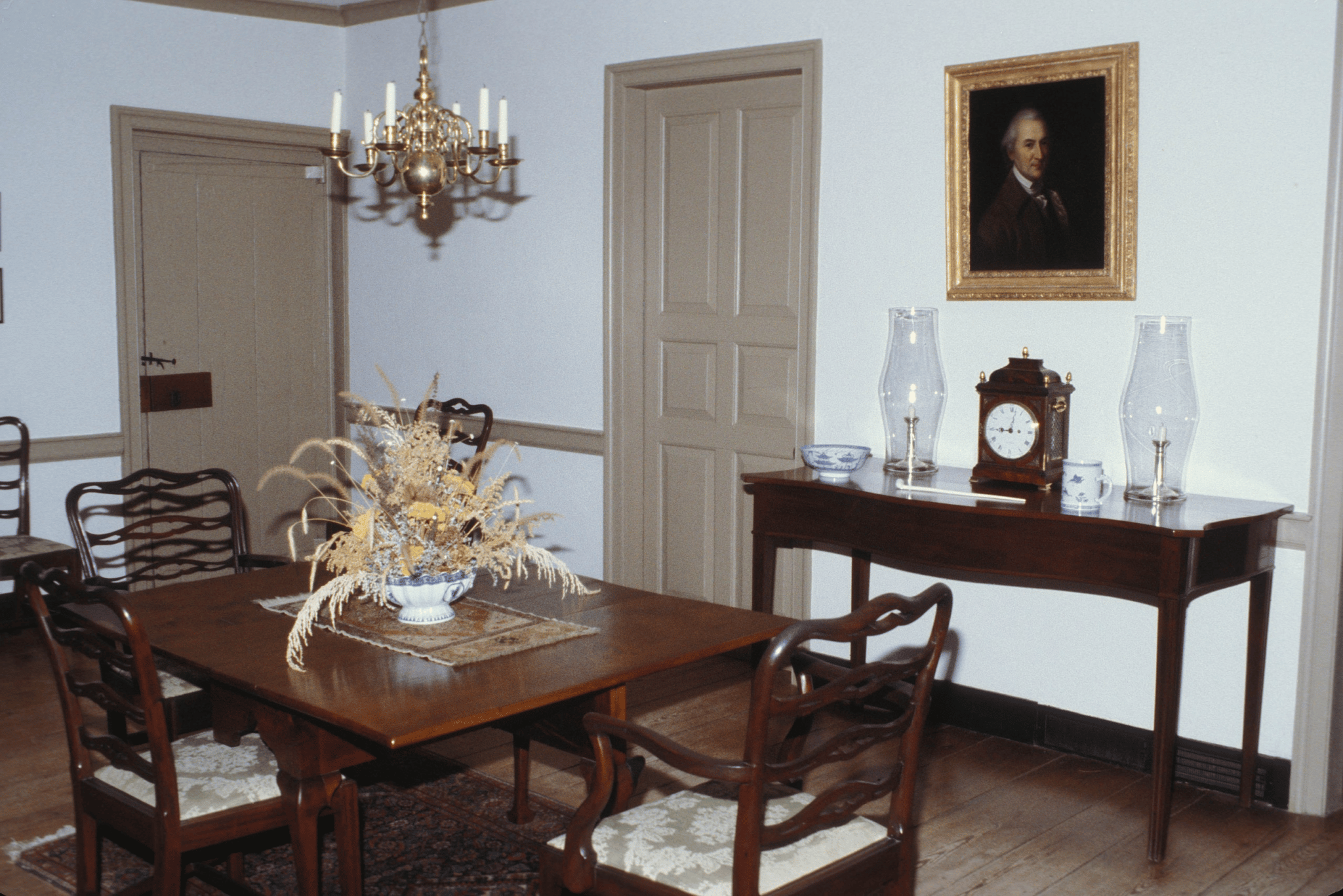
CHECK OUT: 10 BEST Revolutionary War Sites In America
Top 15 Delaware Landmarks
15. Barratt’s Chapel
We’re on to our Top 15 Delaware landmarks. Our next site is a historic church. At #15 on our list is Barratt’s Chapel.
Barratt’s Chapel is a historic church located in Frederica, Delaware. It was built in 1780 and is considered to be one of the oldest surviving Methodist churches in the United States. The history of Barratt’s Chapel is closely tied to the history of Methodism in America.
The church was built by Philip Barratt, a wealthy landowner who was also a devout Methodist. At the time, Methodism was a relatively new religious movement that had just arrived in America from England. Philip Barratt was eager to support the new church and provide a place for Methodists to worship.

A Center For The Methodist Movement
Barratt’s Chapel quickly became a center for the Methodist movement in Delaware. In 1784, it hosted the first Annual Conference of the newly formed Methodist Episcopal Church in America. This conference marked a turning point in the history of Methodism, as it established the organizational structure of the church and set the stage for its rapid growth throughout the United States.
Over the years, Barratt’s Chapel continued to play an important role in the Methodist Church. It was a regular stop on the circuit of traveling Methodist preachers who crisscrossed the country, spreading the gospel and building new churches. The church also served as a meeting place for local Methodist congregations and as a venue for social events and community gatherings.
Today, Barratt’s Chapel is a National Historic Landmark and a popular tourist destination. It has been restored to its original condition and features a museum that tells the story of its history and significance.
The chapel still holds regular services and special events, and visitors can attend tours and educational programs to learn more about the church and its place in American history.
14. Delaware Agricultural Museum And Village
At #14 on our list of the Best Delaware Landmarks is the Delaware Agricultural Museum And Village.
The Delaware Agricultural Museum and Village is located in Dover, Delaware that tells the story of Delaware’s agricultural heritage. The museum was founded in 1980 and is dedicated to preserving and interpreting Delaware’s agricultural history.
The idea for the museum began in the 1970s, when a group of individuals interested in preserving Delaware’s agricultural history formed the Delaware Agricultural Museum Association. The association began collecting artifacts and researching Delaware’s agricultural history. The museum officially opened in 1980 in a converted dairy barn on the Delaware State Fairgrounds.
The museum quickly outgrew its original space and in 1982, the Delaware Agricultural Museum Association purchased a 38-acre farm just outside of Dover to use as a permanent location for the museum.
The farm had a number of historic buildings on the property, including a farmhouse, a blacksmith shop, a schoolhouse, and a general store. The association began restoring these buildings and moving them to the property to create a village that would showcase Delaware’s agricultural heritage.

The Museum Continued To Grow & Expand
Over the years, the museum has continued to grow and expand. In 1991, the museum opened a new exhibition building that doubled the museum’s exhibition space. In 2001, the museum opened a new Welcome Center and in 2012, the museum opened a new 4,800-square-foot agricultural education center.
Today, the Delaware Agricultural Museum and Village is a thriving museum that attracts visitors from around the world. The museum’s exhibits showcase Delaware’s agricultural history, including the state’s important role in the poultry industry, the development of new technologies in agriculture, and the history of farming in the state.
The museum’s village features a number of historic buildings that have been restored to their original condition, including a blacksmith shop, a schoolhouse, a general store, and a number of farmhouses. The museum also hosts a number of special events throughout the year, including a popular fall festival that attracts thousands of visitors.
13. Lightship Overfalls
Moving on to #13 on our list of the Best Delaware Landmarks is one of only 17 lightships still in existence in the United States. It’s Lightship Overfalls.
Lightship Overfalls is a National Historic Landmark located in Lewes, Delaware.
The history of Lightship Overfalls dates back to 1825 when the United States Congress authorized the establishment of a system of lightships to mark dangerous shoals and reefs along the East Coast.
Lightship Overfalls was built in 1938 by the Rice Brothers Shipyard in East Boothbay, Maine, and was first stationed off the coast of Virginia.
In 1951, Lightship Overfalls was reassigned to the waters off the coast of Delaware, where it served until 1961. During its time in Delaware, Lightship Overfalls marked the entrance to the Delaware Bay and warned ships of the dangerous shoals off the coast.
In 1961, Lightship Overfalls was decommissioned and replaced by an automated light tower. The ship was sold to a private owner and was used for a variety of purposes over the years, including as a floating restaurant and a maritime museum.

This Historic Site Was Preserved & Restored
In 2001, a group of volunteers formed the Lightship Overfalls Foundation with the goal of preserving and restoring the ship.
The foundation raised funds to purchase the ship and began the process of restoring it to its original condition. In 2004, Lightship Overfalls was moved back to Lewes, Delaware, where it had originally been stationed.
Today, Lightship Overfalls is open to the public and offers visitors a chance to step back in time and experience life on a lightship. The ship has been restored to its original 1938 appearance, complete with period furnishings and equipment.
Visitors can take guided tours of the ship and learn about its history and the role of lightships in maritime navigation.
The Lightship Overfalls Foundation continues to maintain and operate the ship as a living museum and National Historic Landmark.
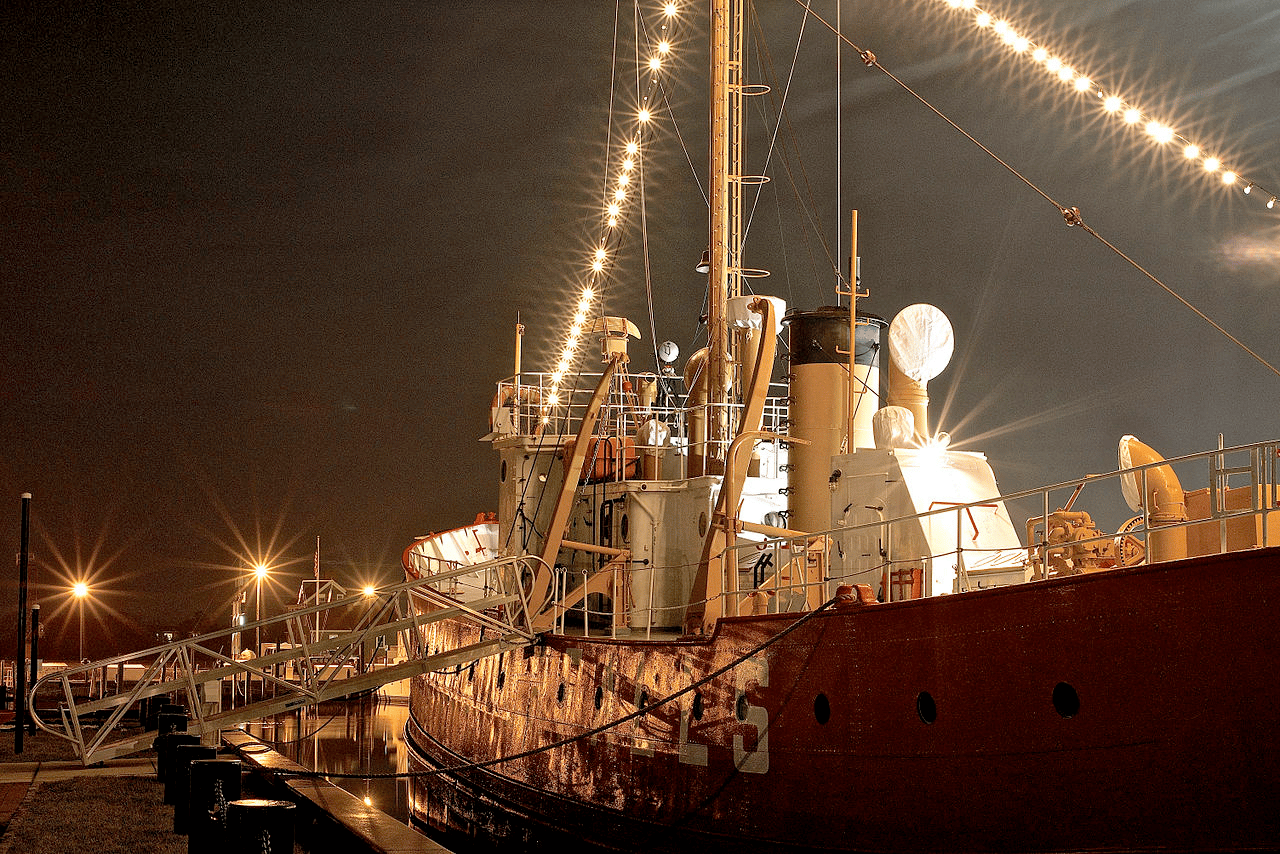
12. Nemours Mansion and Gardens
We move from a historic lightship to a beautiful mansion and gardens. At #12 on our list is Nemours Mansion and Gardens.
It’s a large estate located in Wilmington, Delaware. The mansion was built in the early 20th century by Alfred I. duPont, an American industrialist and philanthropist, as a gift for his second wife, Alicia.
The mansion is designed in the French Renaissance style and features 77 rooms, including a grand hallway, a formal dining room, a ballroom, and a library. The estate also features formal gardens, including a French parterre garden, an Italian garden, and a reflecting pool.
The gardens were designed by the renowned landscape architect Frederick Law Olmsted Jr. and are considered to be some of the finest examples of formal gardens in the United States.
The Nemours Mansion and Gardens is open to the public for tours and is a popular spot for weddings and other events.
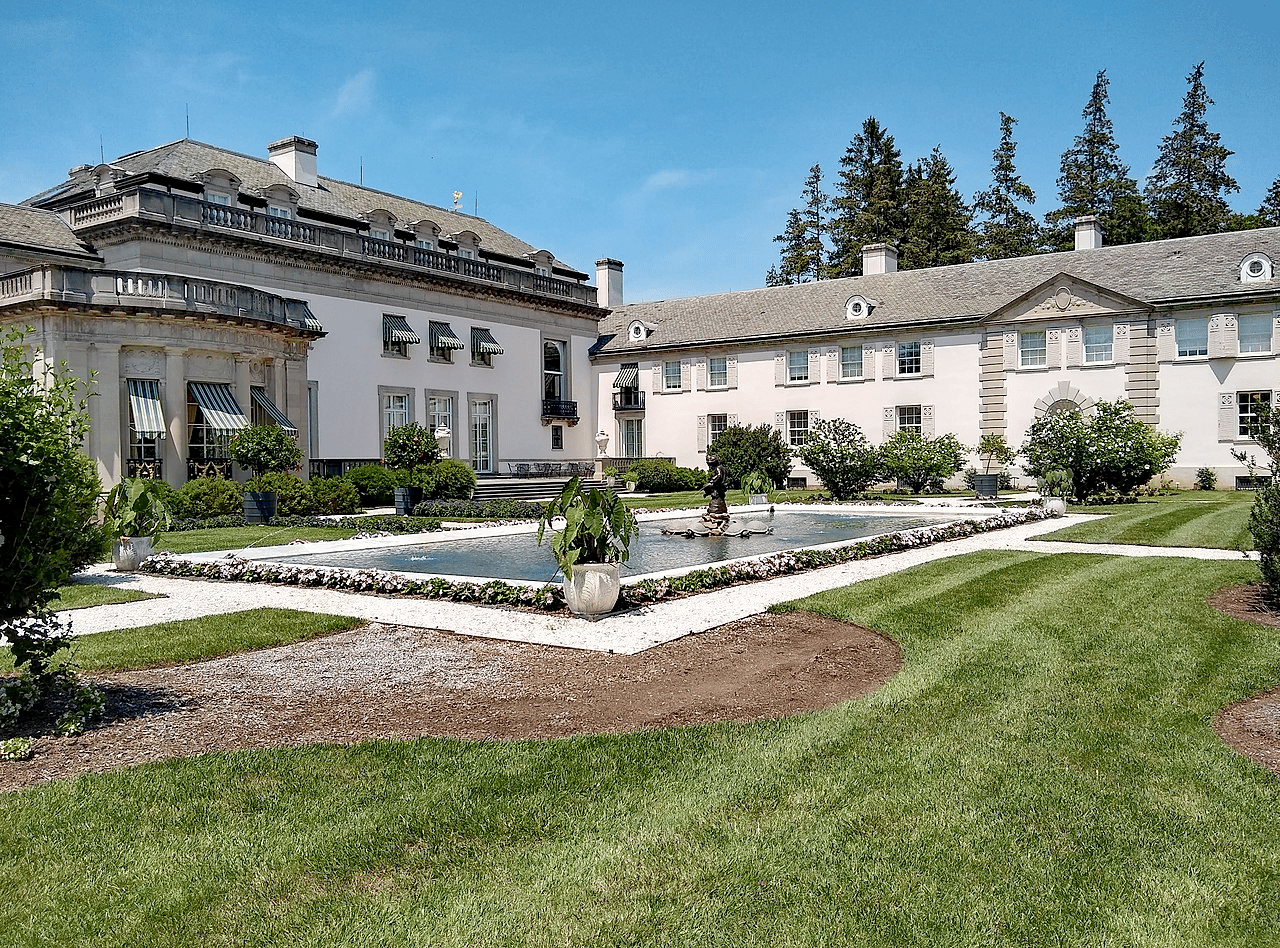
11. Biggs Museum Of American Art
If you enjoy museums then you’ll love our next Delaware landmark. It’s the Biggs Museum Of American Art.
The Biggs Museum of American Art is located in Dover, Delaware, and is dedicated to the collection, preservation, and interpretation of American fine and decorative arts. The museum was founded in 1993 by Sewell C. Biggs, a Dover native and avid art collector.
Sewell C. Biggs began collecting American fine and decorative arts in the 1950s, and over the years his collection grew to include more than 1,500 works of art. In 1989, Biggs donated his collection to the State of Delaware with the stipulation that a museum be built to house and display it.
Construction of the museum began in 1992, and the Biggs Museum of American Art officially opened to the public on October 22, 1993. The museum was housed in the former Federal Building and U.S. Post Office in downtown Dover, a building that was constructed in 1993 and is listed on the National Register of Historic Places.
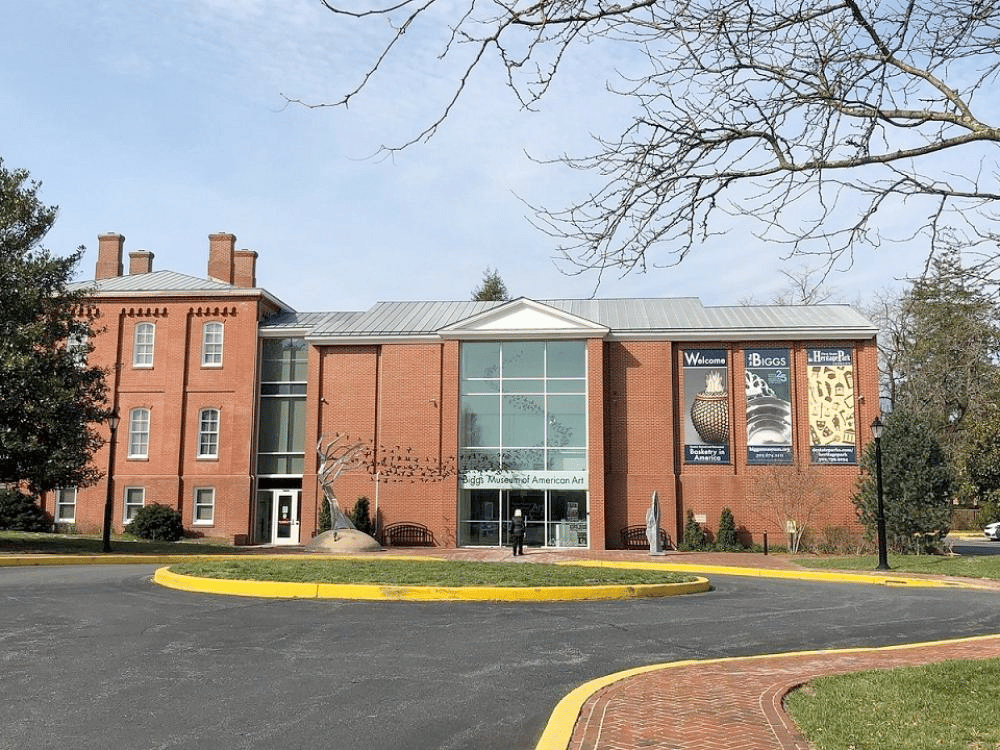
The Museum Includes Fine & Decorative Arts
The museum’s collection includes American fine and decorative arts from the 18th century to the present day. The collection is particularly strong in works from the Mid-Atlantic region, and includes paintings, sculpture, furniture, silver, ceramics, and textiles.
The museum also has a significant collection of paintings by the artist George Bellows, who was a native of Columbus, Ohio.
Over the years, the Biggs Museum of American Art has continued to grow and expand. In 2014, the museum underwent a major renovation and expansion that doubled its exhibition space and added new galleries, an education center, and a sculpture garden.
The museum also hosts a variety of exhibitions, lectures, and special events throughout the year, and has become a popular destination for art lovers and history enthusiasts in Delaware and beyond.
Top 10 Delaware Landmarks
10. Captain John Smith Chesapeake National Historic Trail
Delaware features an amazing national historic trail which comes in at #10 on our list of the Best Delaware Landmarks. It’s the Captain John Smith National Historic Trail.
The trail is a series of water routes that extend for over 3,000 miles along the Chesapeake Bay and its tributaries in Maryland, Virginia, Delaware, and the District of Columbia. It’s named after Captain John Smith, an English explorer who mapped and explored the Chesapeake Bay area in the early 17th century.
The trail offers a variety of recreational activities, including boating, fishing, and hiking. Visitors can follow Smith’s journey by visiting historical sites, such as Jamestown, where he first landed in the New World.
Along the trail, visitors can also see colonial-era towns and villages, lighthouses, and natural areas, such as the Blackwater National Wildlife Refuge.
The trail also offers an opportunity to explore the Chesapeake Bay’s rich cultural heritage, including the history of the Native American tribes that lived in the region and the African-American communities that have shaped the Chesapeake Bay’s history.
The trail is administered by the National Park Service and is the first water trail in the national trail system. There are multiple access points and visitors can explore the trail by boat, kayak, canoe, or other watercrafts.
9. Historic New Castle
Coming in at #9 on our list of the Best Delaware Landmarks is historic New Castle.
New Castle was originally named Fort Casimir. It was founded in 1651 by Peter Stuyvesant, who was sent to provide the Dutch with command of all river traffic. Because of its strategic location, ownership of the settlement was constantly changing. The flags of the Netherlands, Sweden and Great Britain have all flown over New Castle.
The three counties which make up the state of Delaware were added to William Penn’s lands in America. In 1682, Penn came ashore at New Castle and took possession, but these counties, which were well established, became dissatisfied with Penn’s rule.
In 1704, when he granted them a separate legislature, New Castle became the colonial capitol of Delaware. The lively town also briefly served as the first state capital, and continued as the county seat until the 1880’s.
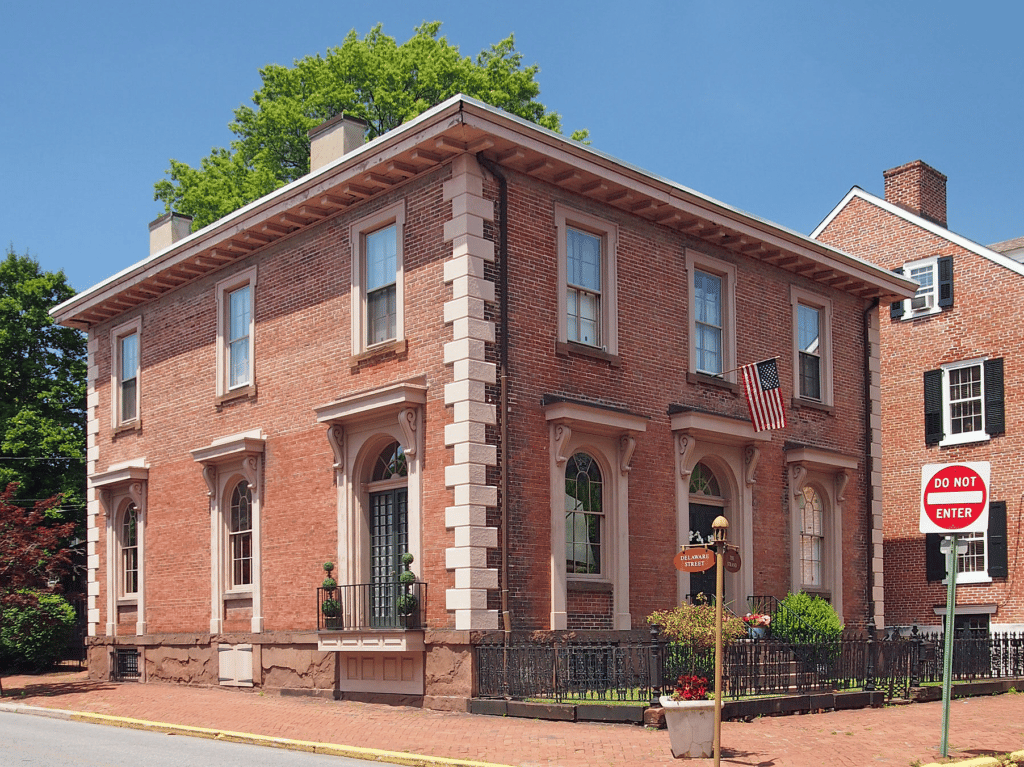
New Castle Was An Ideal Location
New Castle’s location made it an ideal transfer point for trips up and down the coast. As a result, New Castle was a thriving community throughout the 1700’s and early 1800’s.
The courts and general assembly also attracted various judges, lawyers and government officials who built handsome houses, many of which still remain.
The Great Fire of 1824, which started in the stables behind the Jefferson House, claimed many of the inns and warehouses located on The Strand. Among the buildings destroyed was the modest home of George Read, signer of the Declaration on Independence and the Constitution. (Source: City of New Castle)
While the list of noteworthy sites here is seemingly endless, highly recommend stops include: the Old New Castle Courthouse (seat of Delaware’s colonial and state government until 1777); the Delaware Historical Society’s Read House and Gardens; and the three museums operated by the New Castle Historical Society.
8. Fort Miles
Delaware is home to some fascinating forts including one with an amazing backstory which comes in at #8 on our list of the Best Delaware Landmarks. Welcome to Fort Miles.
Fort Miles is located in Cape Henlopen State Park in Lewes, Delaware. It was built during World War II as part of the Harbor Defense of the Delaware, and was named in honor of Major General Nelson A. Miles. It was designed to protect the Delaware Bay and the ports of Philadelphia and Wilmington from enemy attack.
The fort features a variety of military structures and equipment, including bunkers, gun emplacements, and searchlight towers.
Visitors can explore the fort’s underground tunnels and see the various types of artillery that were used to defend the coast. The fort also has a museum that displays artifacts and exhibits about the fort’s history and the role it played during World War II.
Fort Miles is open to the public and offers guided tours, educational programs, and special events throughout the year. Visitors can also explore the surrounding Cape Henlopen State Park which offers activities like beach, hiking, fishing and camping.

7. Hagley Museum
We move from a historic fort to a museum which tells the story of American business and technology. At #7 on our list is the Hagley Museum.
The museum is situated on the site of the original DuPont gunpowder works, which was founded by E.I. du Pont in 1802. The museum’s exhibits and collections cover the history of the DuPont company, the development of American industry, and the impact of technology on society.
The museum features several historic buildings, including the original powder yard and the Eleutherian Mills, the first duPont family home. Visitors can take a guided tour of the powder yard to see how gunpowder was made in the early 19th century.

Explore The Eleutherian Mills
The Eleutherian Mills, which is now a National Historic Landmark, offers a glimpse into the lives of the duPont family and their workers. Visitors can also explore the museum’s exhibits on the history of chemistry, transportation, and communication.
The Hagley Museum also features a large collection of artifacts, including tools, machinery, photographs, and documents. The library and archives at the Hagley Museum are open to researchers and features a wealth of primary sources on the history of American industry, technology, and business.
It’s open to the public and offers guided tours, educational programs, and special events throughout the year.
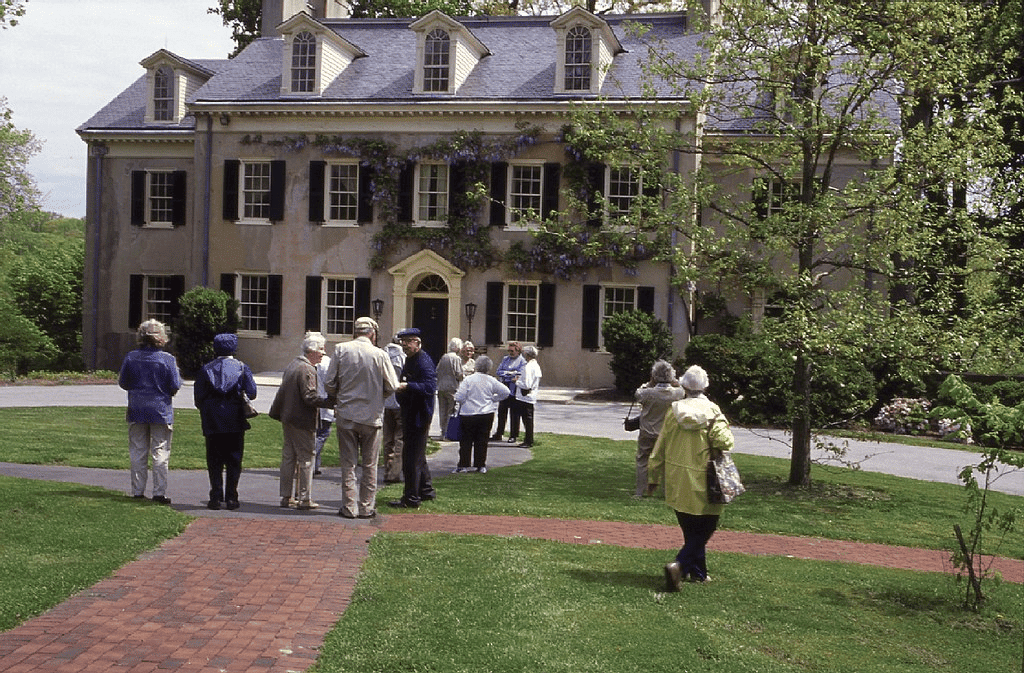
6. The Kalmar Nyckel
Our next Delaware landmark is an exceptional ship with an extraordinary record of endurance. At #6 on our list of the Best Delaware Landmarks is The Kalmar Nyckel.
It’s a Swedish ship that was built by the Dutch famed for carrying Swedish settlers to North America in 1638, to establish the colony of New Sweden. Welcome to the Kalmar Nyckel.
The name Kalmar Nyckel comes from the Swedish city of Kalmar and nyckel meaning key in Swedish.
Today’s tall ship is not the original however. It’s a replica upon which you can climb aboard for a sail back in time to the first settlers to the state.
This Tall Ship of Delaware was launched into the Christina River in 1997, about 200 yards downstream from the site of the original ship’s first landing at “The Rocks” in March of 1638.
Visitors can step back in time by actually setting sail on the Kalmar Nyckel with river cruises and pirate sails.
There’s also the The Copeland Maritime Center. It’s an experiential learning center that welcomes visitors year-round, providing educational programs, community festivals, and special events for visitors interested in Delaware’s maritime and cultural heritage.
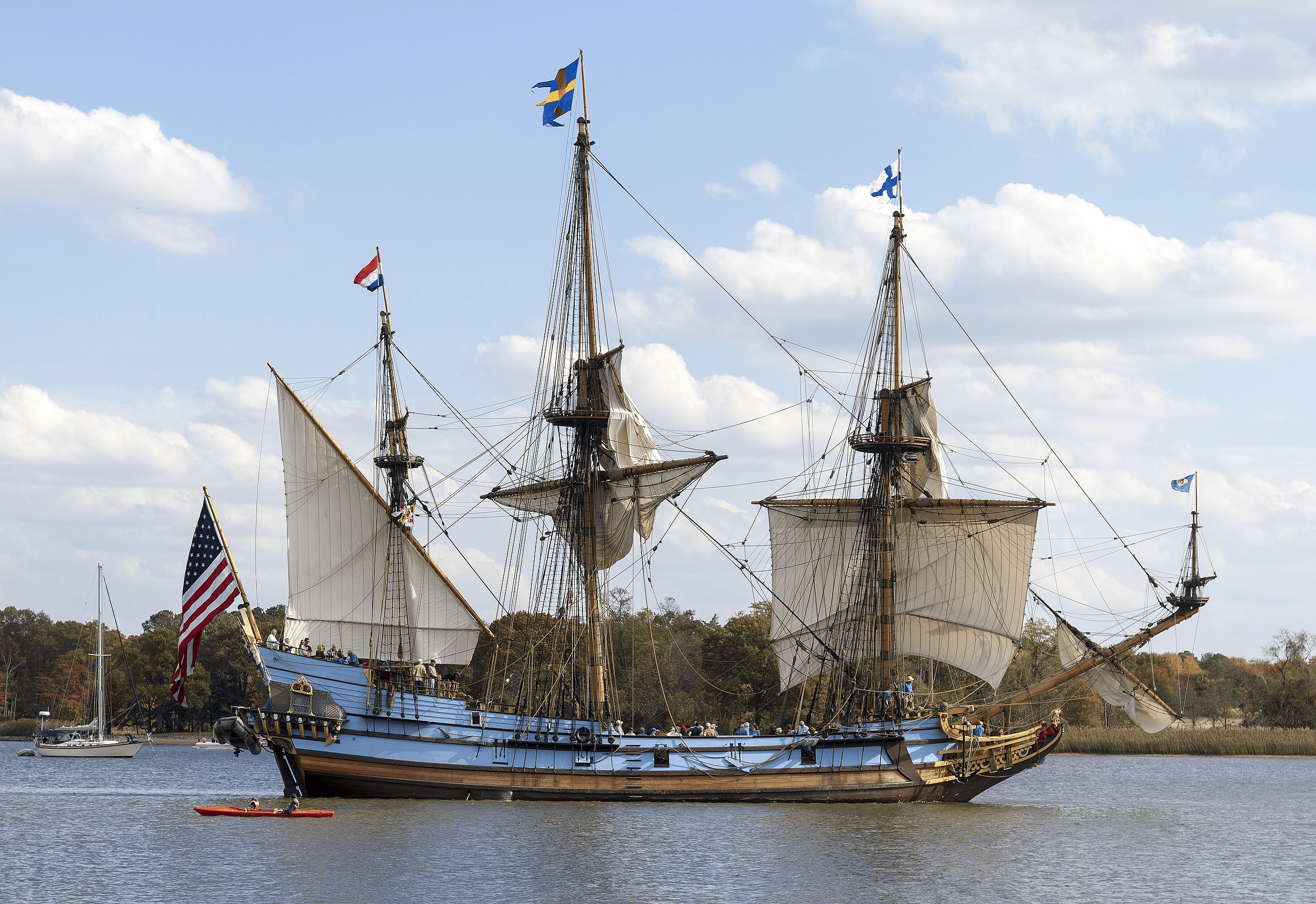
Top 5 Delaware Landmarks
5. President Biden Driving Tour
We’re on to the Top 5 Delaware landmarks. At #5 is a site which celebrates the man who served as Delaware’s Senator before becoming the Vice President and then President of the United States. Welcome to the President Biden Driving Tour.
President Joe Biden was not actually born in the state of Delaware, but his family moved there when he was 10 years old.
He was elected to the New Castle County Council in 1970 and became the sixth-youngest senator in U.S. history after he was elected to the United States Senate from Delaware in 1972, at age 29.
Biden was the chair or ranking member of the Senate Foreign Relations Committee for 12 years.
He also chaired the Senate Judiciary Committee from 1987 to 1995; led the effort to pass the Violent Crime Control and Law Enforcement Act and the Violence Against Women Act; and oversaw six U.S. Supreme Court confirmation hearings.
Biden served as a Senator from Delaware from 1973 until his election as Vice-President in 2008.

Check Out The President Biden Driving Tour
While in Delaware, why not check out the President Biden Driving Tour. You can now take a driving tour through the state where Joe Biden’s journey to Washington began and discover the places and people that define “the very best of who we are as Americans.”
So, pack your aviator sunglasses and hit the road with the President Biden Driving Tour that’s filled with presidential pit stops, from the hope filled artwork found on the Chase Center in Wilmington to the sunrises found on the Junction Breakwater Trail.
Stops Along The Biden Driving Tour
Stops along this tour include the following:
- Biden Welcome Center: The first stop on your trip as you enter the northern part of the state on I-95 is the Biden Welcome Center, named for Biden, his family, and their spirit of hospitality. After you stop for a quick refresh, a bite to eat, and information on statewide attractions, events, and activities be sure to take a picture with the Welcome to Delaware sign.
- Delaware Discoveries Trail which has added a new addition, it’s 10th overall, to its tour of interactive street art. With a bouquet of Delaware-centric balloons, visitors can stand in front of the artwork and become immersed in a hopeful and celebratory moment.
- Junction Breakwater Trail which runs between Rehoboth Beach and Lewes with its photogenic pit stops of scenic coastal landscape, holds some of the best views of ocean front sunrises, signaling the start of a new day on the horizon. And if you haven’t already, be prepared to see photos of Biden biking along the looping 15 mile trail. (Source: Visit Delaware)

To learn more about the President Biden Driving Tour check out this helpful website
4. Delaware Art Museum
We’re on to the “Final Four.” At #4 is a museum that is located in Wilmington, Delaware. It features a collection of American art and serves as a center for arts education and cultural events. Welcome to the Delaware Art Museum.
The museum was founded in 1912 by a group of Wilmington residents who were interested in promoting art education and appreciation in the state.
The museum’s first home was a building located in downtown Wilmington, which was donated by the DuPont family.
The museum’s collection began with a gift of paintings and prints from Samuel Bancroft Jr., a prominent collector of American art. The collection grew over the years through donations, bequests, and purchases, and now includes more than 12,000 works of art.
n the 1930s, the museum expanded its collection to include works by European artists, as well as decorative arts and crafts. During World War II, the museum housed the U.S. Army’s Office of Strategic Services, which was responsible for gathering intelligence on Nazi Germany.
In the 1950s and 1960s, the museum underwent a major renovation and expansion, which included the construction of new galleries and the addition of a sculpture garden. The museum also began to focus more on the promotion of American art and culture, and established itself as a leading center for arts education in the state.

The Museum Underwent Renovation & Expansion
In 2005, the museum underwent another major renovation and expansion, which included the addition of a new wing for contemporary art, as well as new galleries, classrooms, and a café.
The museum’s collection now includes works by a wide range of American artists, including John Sloan, Edward Hopper, Winslow Homer, and Andrew Wyeth.
The Delaware Art Museum is also home to a number of important special collections, including the Howard Pyle collection, which features works by the celebrated illustrator and Delaware native, and the John Sloan archive, which includes photographs, letters, and other materials related to the life and work of the American artist.
Today, the Delaware Art Museum is a popular destination for art lovers and cultural enthusiasts from throughout the region. The museum hosts a variety of exhibitions, lectures, and special events throughout the year, and continues to serve as a center for arts education and cultural enrichment in Delaware.
3. Fort Delaware
At #3 is another fascinating fort with yet another amazing story to tell. It’s Fort Delaware.
Fort Delaware is located on Pea Patch Island in the Delaware River. It was built during the period of 1848-1859 to protect the ports of Philadelphia and Wilmington from potential enemy attack.
It served as a prison during the American Civil War, with Confederate soldiers and political prisoners being held there. The fort was also used as a training facility for Union soldiers and as a military hospital.
During the Civil War, Fort Delaware held more than 33,000 Confederate prisoners of war, making it the third largest prison for Confederate soldiers during the war. Many of the prisoners were held in inhumane conditions, and over 2,500 prisoners died while being held at the fort.
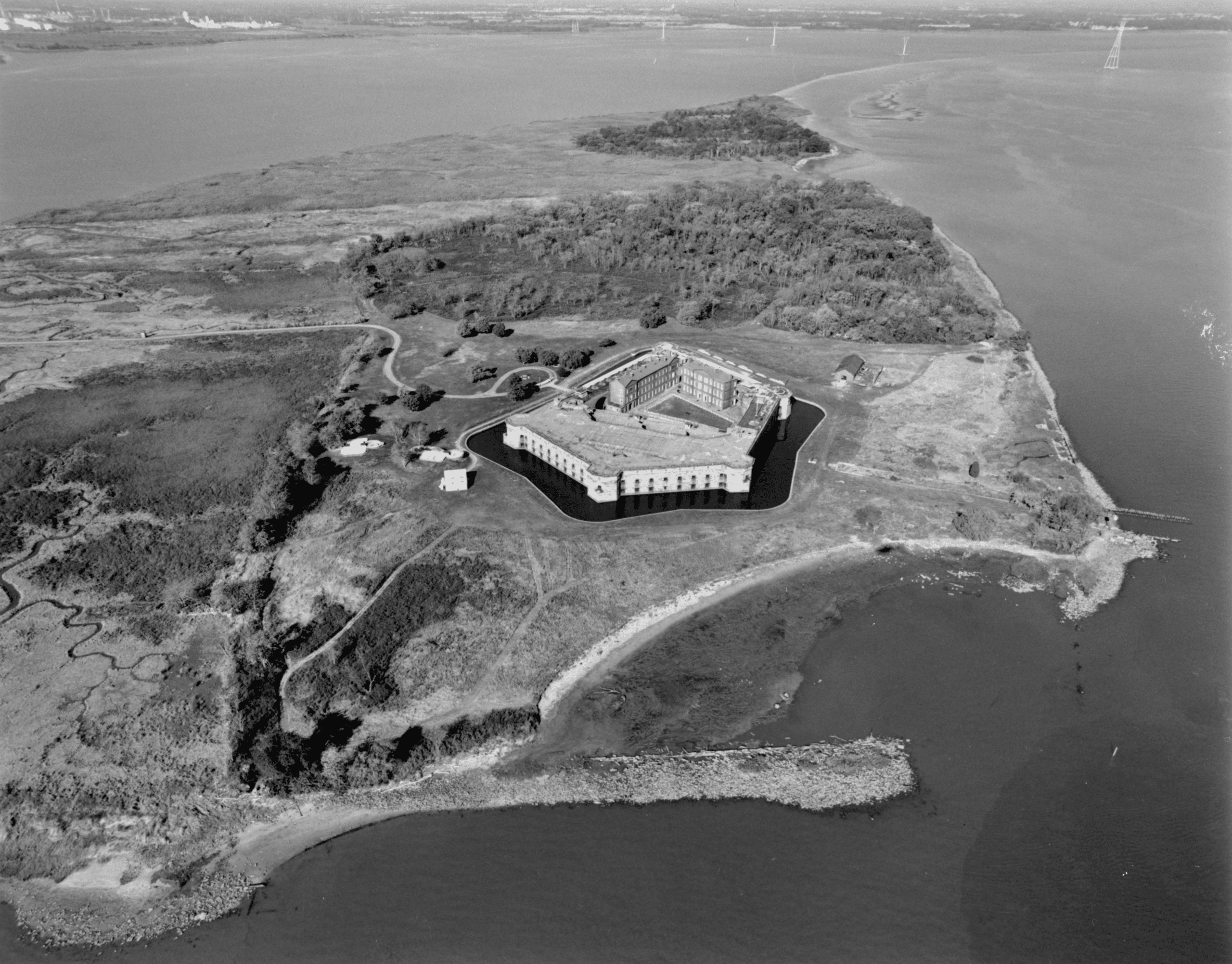
The Fort Was Used As A Training Facility
After the war, the fort was used as a training facility for soldiers and as a quarantine station for immigrants. It was also used as a military prison for a short period of time. In the 20th century, the fort fell into disrepair and was eventually turned over to the state of Delaware for use as a state park.
Today, Fort Delaware is a state park and historical site, open to visitors for tours and educational programs. It is a popular destination for Civil War history enthusiasts and offers a glimpse into the past, with preserved buildings and exhibits on the history of the fort and the prisoners who were held there.
CHECK OUT: 25 Bucket List Famous Landmarks In America (MUST-SEE)
2. Winterthur Museum, Garden and Library
We’ve made it to the final two landmarks. In the runner-up spot at #2 is a stunning mansion featuring the most significant collection of American decorative arts in the world.
It’s world-class naturalistic garden set within 1,000 acres of rolling hills, streams, meadows, and forests. Welcome to the Winterthur Museum, Garden and Library.
The Winterthur Museum, Garden and Library is located in Winterthur, Delaware. It was founded by Henry Francis du Pont, an American collector, horticulturist, and philanthropist, who opened it to the public in 1951.
The museum is housed in the former home of the Du Pont family, a 175-room mansion that was built in 1839 and was the family’s residence for over a century.
The museum’s collection includes decorative arts from America’s colonial period through the American Renaissance, with a particular emphasis on American furniture, ceramics, textiles, and other decorative objects.
The collection contains over 90,000 objects, including furniture, ceramics, textiles, metalware, prints, and paintings. The museum also has a large collection of American paintings, including works by Thomas Sully, Charles Willson Peale, and Gilbert Stuart.
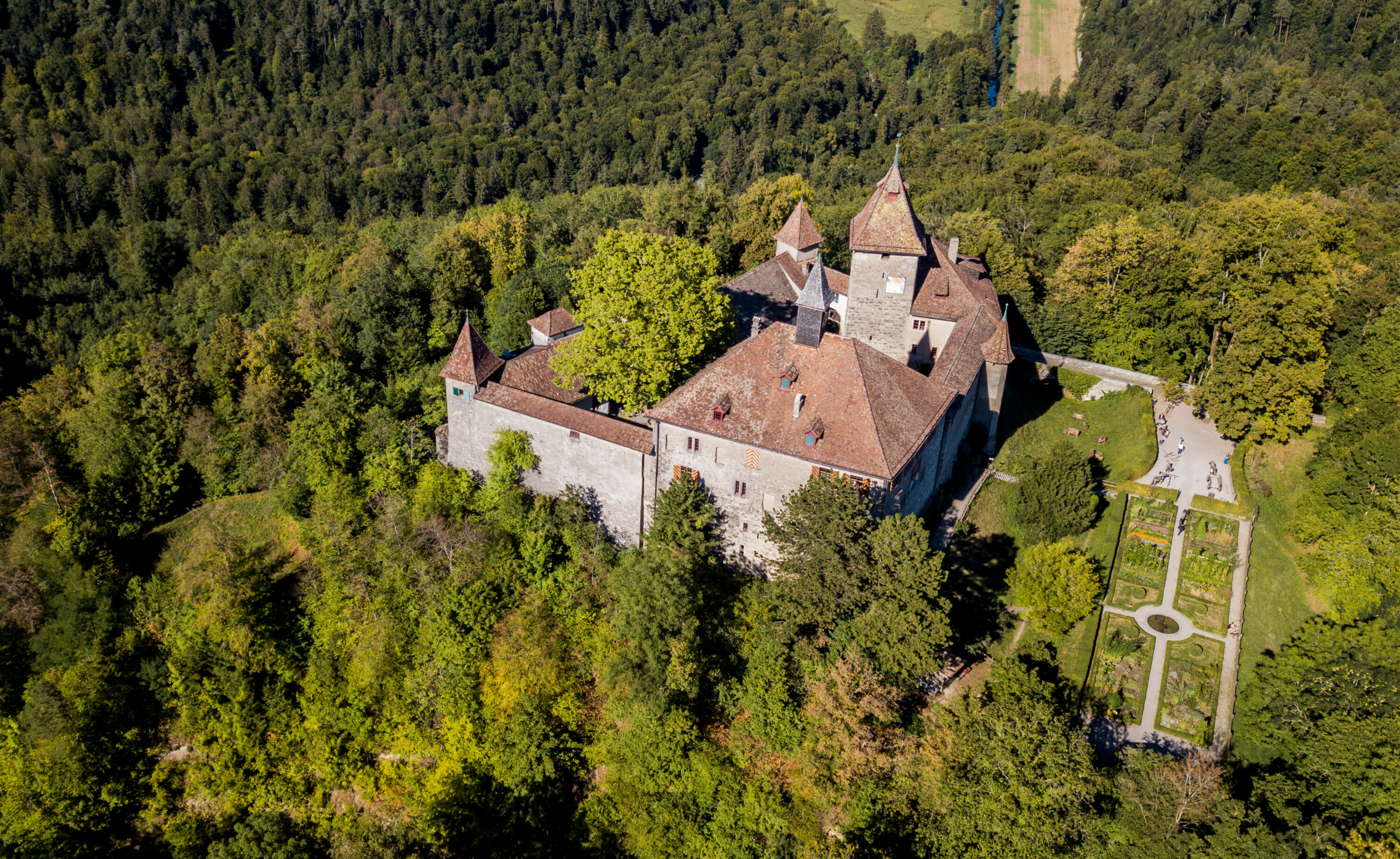
One Of The Most Significant Gardens In North America
The Winterthur Museum’s garden is considered one of the most significant gardens in North America. The garden features over 1,000 acres of naturalistic landscapes, including a 60-acre meadow garden, a 4-acre naturalistic garden, and a 4-acre cutting garden.
It’s one of the most extensive libraries in America devoted to American art and material culture. The library’s holdings include rare books, manuscripts, prints, photographs, architectural drawings, and other primary resources for the study of American art, architecture, and material culture.
The Winterthur Museum, Garden and Library is a National Historic Landmark and is open to the public for tours, educational programs, and special exhibitions. It is a popular destination for art and history enthusiasts, as well as garden enthusiasts.

1. First State National Historical Park
As the #1 Delaware Landmark, More Than Just Parks has selected the First State National Historical Park.
The First State National Historical Park was established in 2013.
The park encompasses several historic sites and landmarks throughout the state that are associated with Delaware’s role in the American Revolution and the early years of the United States.
The idea for a national park in Delaware was first proposed in the 1990s by a group of local historians and preservationists who were concerned about the loss of historic sites and landmarks in the state.
They lobbied the federal government to establish a national park that would protect and promote Delaware’s rich history. In 2013, Congress passed legislation creating the First State National Historical Park.
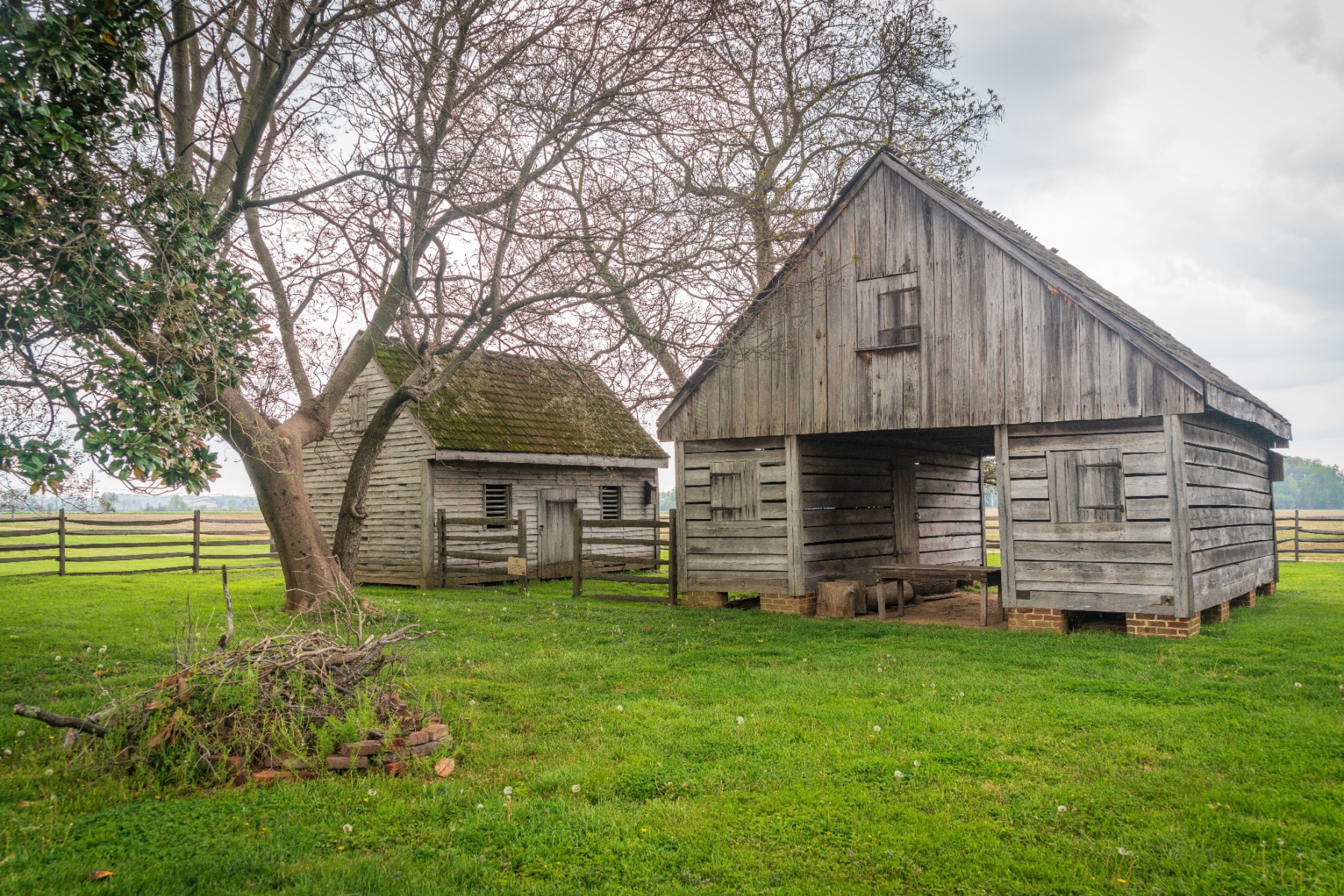
Things To See & Do
The six sites of First State National Historical Park include:
- The John Dickinson Plantation, which is a restored 18th-century plantation that was once home to John Dickinson, one of the leading figures of the American Revolution.
- The New Castle Court House Museum, which is a restored 18th-century courthouse that was the site of some of the most important events in Delaware’s history.
- The Old Swedes Church, which is a National Historic Landmark that is the oldest existing church building in Delaware.
- The Ryves Holt House, which is a restored 17th-century house that is believed to be the oldest surviving house in Delaware.
- The First State Heritage Park at Dover, which includes several historic sites in the city of Dover, including the Old State House and the Green.
- The Beaver Valley, which is a natural area that includes the remains of a 19th-century industrial village, a restored canal lock, and a historic bridge.
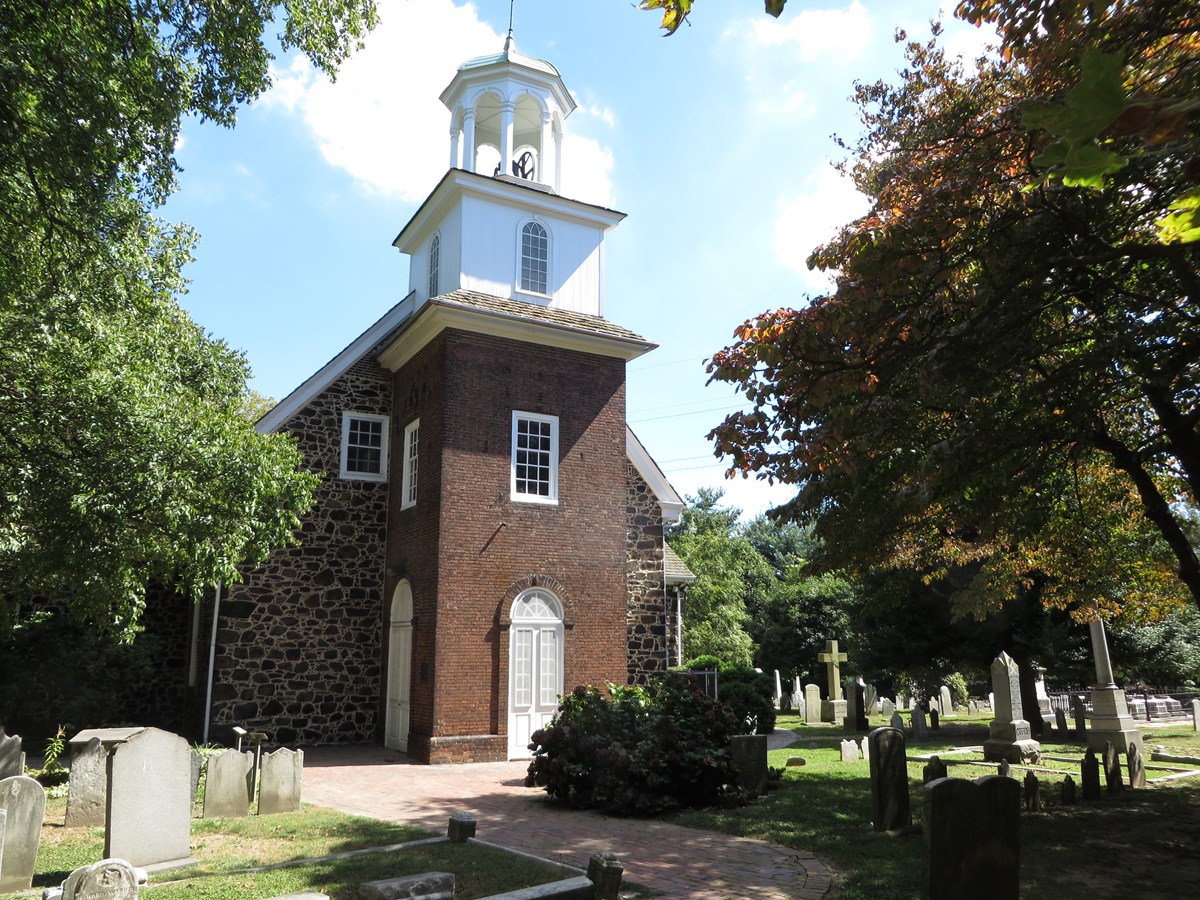
List Of Delaware Landmarks
- First State National Historical Park
- Winterthur Museum, Garden and Library
- Fort Delaware
- Delaware Art Museum
- President Biden Driving Tour
- The Kalmar Nyckel
- Hagley Museum
- Fort Miles
- Historic New Castle
- Captain John Smith Chesapeake National Historic Trail
- Biggs Museum Of American Art
- Nemours Mansion and Gardens
- Lightship Overfalls
- Delaware Agricultural Museum And Village
- Barratt’s Chapel
- John Dickinson Plantation
- Air Mobility Command Museum
- Delaware Seashore State Park
- Fenwick Island Lighthouse
- New Castle Court House Museum
Why Trust Us About Delaware Landmarks?
We’re Jim Pattiz and Will Pattiz, collectively known as the Pattiz Brothers and we absolutely LOVE the national parks.
You should probably know that we don’t just make this stuff up out of thin air. We’ve spent our entire adult lives exploring and filming America’s national parks and public lands.
We’ve worked with the National Park Service, the Department of Interior, USDA, U.S. Forest Service, and more for years creating films on important places and issues. Our work has been featured in leading publications all over the world and even some people outside of our immediate family call us experts on the national parks.
And, in 2018, our father – having spent a lifetime teaching history – joined us so that he could help us to tell the stories behind these amazing places.
Meet The Parks Brothers
We Hope You’ll Follow Our Journey

Our goal here at More Than Just Parks is to share the beauty of America’s national parks and public lands through stunning short films in an effort to get Americans and the world to see the true value in land conservation.
We hope you’ll follow our journey through the parks and help us to keep them the incredible places that they are. If you’re interested in joining the adventure then please sign up below!
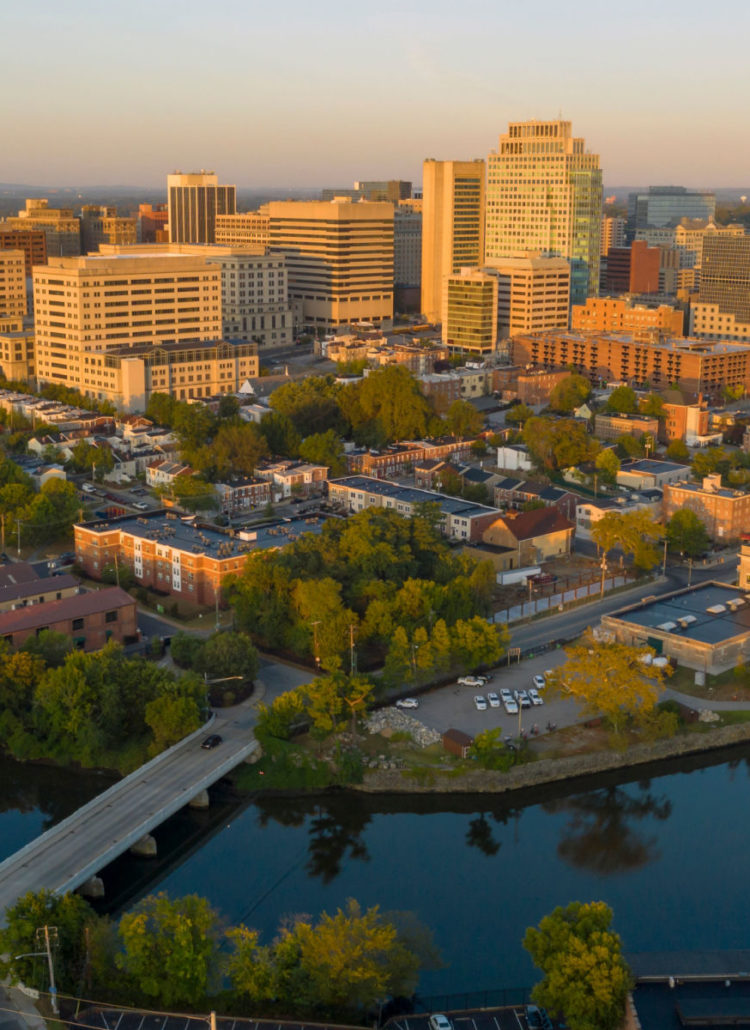

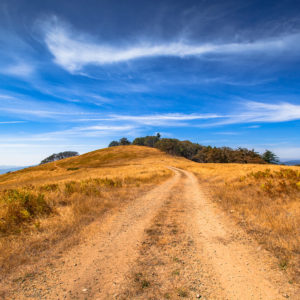

Leave a Reply